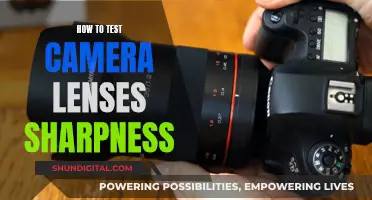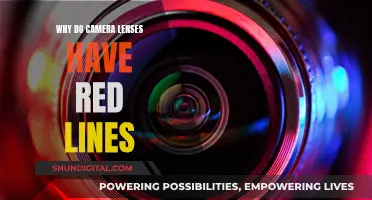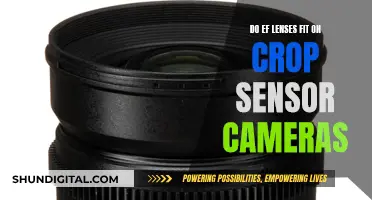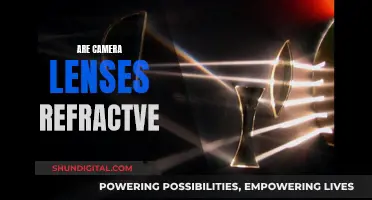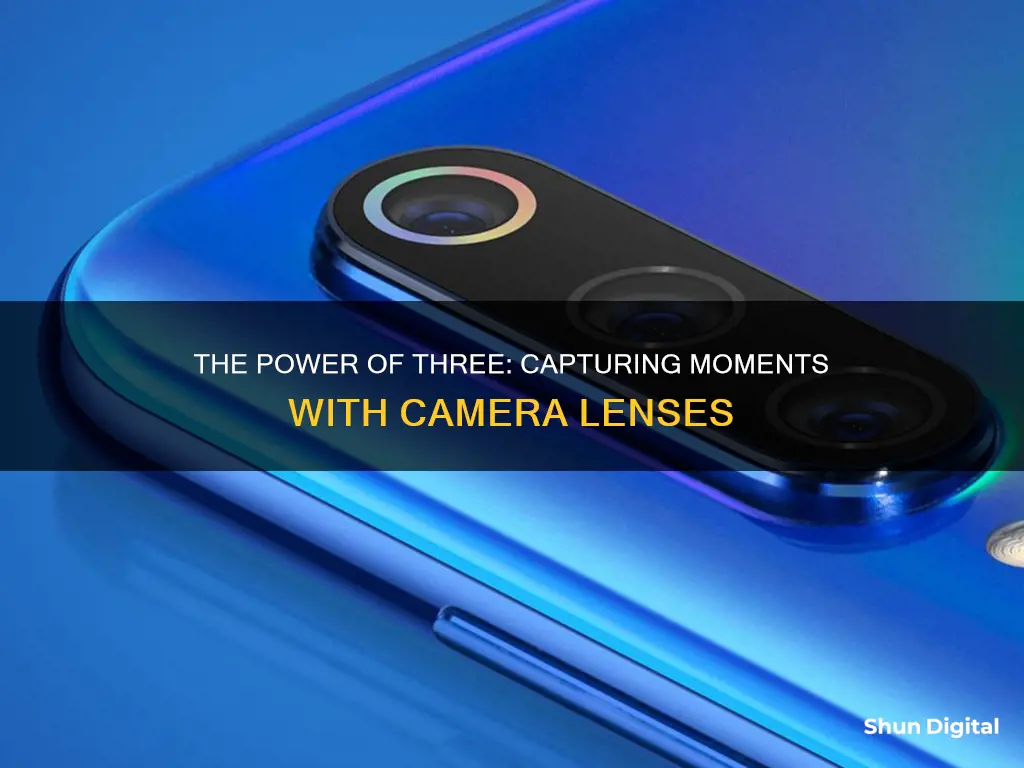
The number of lenses on a smartphone camera has increased in recent years, with triple-lens cameras becoming the new norm. The third camera is often a wide-angle lens, which increases the scope of a camera's view and enhances its zooming capabilities. However, the third lens can also be used for other purposes, such as improving photography in low-light conditions or capturing more detail in a single frame.
Smartphone cameras with multiple lenses offer different focal lengths, allowing for better image quality by capturing photos at native focal lengths without relying heavily on digital trickery. The additional lenses can also enable optical zoom, which provides clearer images compared to digital zoom.
The combination of different lenses and their respective sensors also enables features such as bokeh or portrait mode, where the background is blurred while the foreground remains in focus. This is achieved by combining data from multiple lenses to understand the distance of objects in the frame.
In summary, the trend towards three or more camera lenses on smartphones aims to provide users with enhanced photography features, improved image quality, and increased versatility in capturing different types of scenes.
| Characteristics | Values |
|---|---|
| Number of Cameras | 3 |
| Purpose | To provide different focal lengths |
| Image Quality | Improved |
| Zoom | Optical & Digital |
| Low Light Performance | Improved |
| Image Stabilization | Improved |
| Depth Sensing | Enabled |
| Portrait Mode | Enabled |
| Augmented Reality | Enabled |
| Field of View | Wide, Telephoto, Ultra Wide |
What You'll Learn

Superior imaging capabilities
The integration of three camera lenses in smartphones is driven by the demand for superior imaging capabilities in compact devices. This evolution in smartphone camera technology offers a versatile range of focal lengths, improved image quality, depth sensing, and enhanced low-light performance.
The three lenses work together to provide different focal lengths, allowing for optical and digital zoom capabilities. The standard or primary lens offers a normal field of view and typically excels in resolution and low-light performance. The ultra-wide-angle lens expands the field of view, capturing more of the scene. The telephoto lens, on the other hand, enables optical zoom and focuses on distant subjects, bringing them closer without compromising image quality.
The benefit of having multiple lenses becomes evident when comparing the imaging capabilities of a single-lens phone camera to that of a multi-camera setup. With three lenses, smartphones can offer improved zoom functionality, HDR (High Dynamic Range), portrait modes, and enhanced low-light photography. The main camera, often with a high-resolution sensor, captures stunning landscapes and detailed group photos. The telephoto lens allows for distant shots, while the ultra-wide lens enables creative compositions with unique perspectives.
The addition of a third lens also enhances depth sensing, enabling features like portrait mode and augmented reality. Furthermore, with more lenses, smartphones can leverage advanced software features, such as Night Mode and Deep Fusion, to further improve image quality, especially in low-light conditions.
The inclusion of three camera lenses in smartphones is a direct response to consumer demands for superior imaging capabilities in their pocket-sized devices. By utilising a combination of standard, ultra-wide, and telephoto lenses, smartphones can now offer versatile imaging options, improved image quality, and enhanced photography features, elevating the overall photography experience for users.
CCD Camera Lenses: Color Corrected or Not?
You may want to see also

Different focal lengths
Lenses with shorter focal lengths, typically those below 35mm, are considered wide-angle lenses. These lenses have a wider field of view, allowing photographers to capture more of the scene in a single frame. They are commonly used in architectural, documentary, and landscape photography, as well as for environmental portraits and large group shots. Wide-angle lenses make subjects appear smaller, so photographers need to stand closer to fill the frame. They also tend to distort images, especially around the edges, so care must be taken to maintain straight lines.
On the other hand, lenses with longer focal lengths, typically those above 70-85mm, are referred to as telephoto lenses. These lenses have a narrower field of view, allowing photographers to capture distant subjects without having to move closer to them. This makes them ideal for situations where the photographer wants to remain unobtrusive, such as sports, wildlife, or wedding photography. Telephoto lenses also offer less distortion and compression of distance, making the foreground, middle, and background appear closer together in the image.
In addition to the standard lenses with focal lengths around 50mm, which approximate the human field of view, photographers can choose from a range of wide-angle and telephoto lenses to suit their specific needs. Prime lenses have a fixed focal length, while zoom lenses offer variable focal lengths, providing photographers with greater flexibility in capturing different types of shots.
Olympus 4/3 Camera Lenses: Discontinuation and What's Next
You may want to see also

Optical and digital zoom
Modern phone cameras have three or more lenses to provide different focal lengths. These lenses are used for different purposes, such as taking wide-angle photos, selfies, close-up shots, or "portrait" shots with a blurred background.
One of the main advantages of having multiple lenses is to enable optical zoom. Optical zoom brings the image closer by physically moving different lens parts relative to each other, allowing you to zoom in without losing image quality. This is in contrast to digital zoom, which is a software-based approach that crops and enlarges a portion of the image. While digital zoom is more flexible and compact, it can result in a loss of image quality due to pixelation.
Optical zoom offers genuine magnification that keeps the subject sharp and clear. It involves the physical adjustment of lens elements, changing the focal length without altering the original pixel count of the image. This means that the image retains its original resolution and clarity, even when zoomed in. Optical zoom is especially useful in applications where image detail is crucial, such as industrial inspections, medical imaging, or remote monitoring. It also performs better in low-light conditions compared to digital zoom.
However, optical zoom lenses tend to be larger and more expensive due to the requirement for moveable optics and a motorized system. They are also more prone to wear and tear and may have slower focus adjustments.
Digital zoom, on the other hand, is more compact, cost-effective, and energy-efficient. It adjusts zoom levels quickly without the need for mechanical lens movement, making it useful for fast-paced environments and battery-powered devices. However, the trade-off is a potential loss of image quality due to pixel enlargement and limited range.
In summary, optical zoom provides superior image quality and is essential for maintaining image detail and resolution. Digital zoom, while more flexible and affordable, can result in a compromise in image quality. The choice between the two depends on the specific requirements of the application, with optical zoom being preferred for applications requiring high image detail, resolution, and low-light performance, while digital zoom may be sufficient for applications where compactness and flexibility are prioritized.
RF Lenses: The Future of Mirrorless Photography?
You may want to see also

Low-light photography
One of the biggest advantages of having three lenses is the ability to use a wider aperture. A large maximum aperture, such as f/1.2 or f/1.4, allows more light to reach the sensor, resulting in brighter and clearer images. Prime lenses, which have a fixed focal length, typically offer larger apertures than zoom lenses, making them ideal for low-light photography.
In addition to a wide aperture, longer exposure times can help capture more light. This technique involves leaving the shutter open for a longer duration, allowing the sensor to gather more light. However, it's important to use a tripod or image stabilisation to prevent blurry images when shooting with slower shutter speeds.
Image stabilisation is another crucial feature for low-light photography. It compensates for unintentional camera movement, enabling sharper images even at slower shutter speeds. This feature is especially useful when shooting handheld, as it minimises the appearance of noise in your photos.
When it comes to low-light photography, the lens you use will have the biggest impact on your results. A lens with a wider maximum aperture can make a significant difference, allowing you to capture clearer images in darker environments.
- Voigtlander 17.5mm f0.95: Offers superb colour rendition and a unique aperture range.
- M.Zuiko 17mm F1.2 PRO: One of the sharpest lenses available, delivering exceptional image quality even when used wide open.
- Laowa Argus 25mm f0.95 APO: Features apochromatic lens elements that enhance contrast and sharpness.
- M.Zuiko 45mm F1.2 PRO: Provides excellent manual focus control, quick and accurate autofocus, and superb build quality.
- Panasonic 42.5mm f1.2: Renowned for its exceptional sharpness, beautiful bokeh, and accurate autofocus.
Leica Camera Lenses: Capturing the World Differently
You may want to see also

Improved image stabilisation
Image stabilisation is a technology built into modern cameras and lenses that minimises blur caused by camera shake. It is also known as vibration reduction, optical stabilisation, and image stabilisation (IS), among other names. It works by using a floating lens element that is controlled electronically by a microcomputer, shifting in the opposite direction of the camera shake to stabilise the image.
Image stabilisation is particularly useful when shooting handheld or with limited available light. It allows photographers to capture sharper images of stationary objects at shutter speeds 3-5 times slower than previously possible without the technology. For example, a 200mm lens should be shot at 1/200th of a second or higher to avoid camera shake. With image stabilisation, the same image can be captured at 1/13th of a second.
There are two types of image stabilisation: lens-based and in-camera. Lens-based stabilisation uses a floating lens element that is electronically controlled and shifted opposite to any camera shake recorded by the camera. In-camera stabilisation, also known as in-body image stabilisation (IBIS), works similarly but physically shifts the image sensor to compensate for movement. IBIS is universal and works with all lenses, whereas lens-based stabilisation is not available for all lenses and adds to the cost.
Image stabilisation has several advantages for photographers. It allows for sharper images, especially when working handheld or in low-light conditions. It can also help to stabilise the image in the viewfinder, making it easier to achieve better focus. Additionally, it can improve video quality when shooting handheld.
However, there are some misconceptions and limitations to image stabilisation. It does not help to freeze the motion of fast-moving subjects or stabilise blur caused by moving subjects. It is most effective at slower, wider motions and is not beneficial at shutter speeds faster than 1/500. It is also important to note that image stabilisation can negatively impact image quality in some cases and may drain the camera's battery more quickly.
Overall, image stabilisation is a valuable tool for photographers, especially when shooting stationary objects in low light or using telephoto lenses. By understanding how it works and its limitations, photographers can leverage its advantages to capture sharper images.
Mirror Lenses: Unique Reflections in Camera Optics
You may want to see also
Frequently asked questions
The three lenses provide different focal lengths, which allow for different types of shots. The lenses are typically standard, wide-angle, and telephoto, which allow for optical zoom and higher-quality images.
The benefits of having three camera lenses include improved image quality, depth sensing (portrait mode and augmented reality), optical and digital zoom, and improved low-light performance.
The most common types of smartphone camera lenses are:
- Wide – captures a broader field of view.
- Telephoto – offers optical zoom and focuses on distant subjects.
- Macro – designed for super close-up shots with extreme detail.
- Standard/Primary – offers a standard field of view and usually has the best resolution and low-light performance.
- Ultra Wide – expands the field of view even further than a wide-angle lens.
- Depth Sensor/Time of Flight – measures the distance between the camera and objects in the scene.


